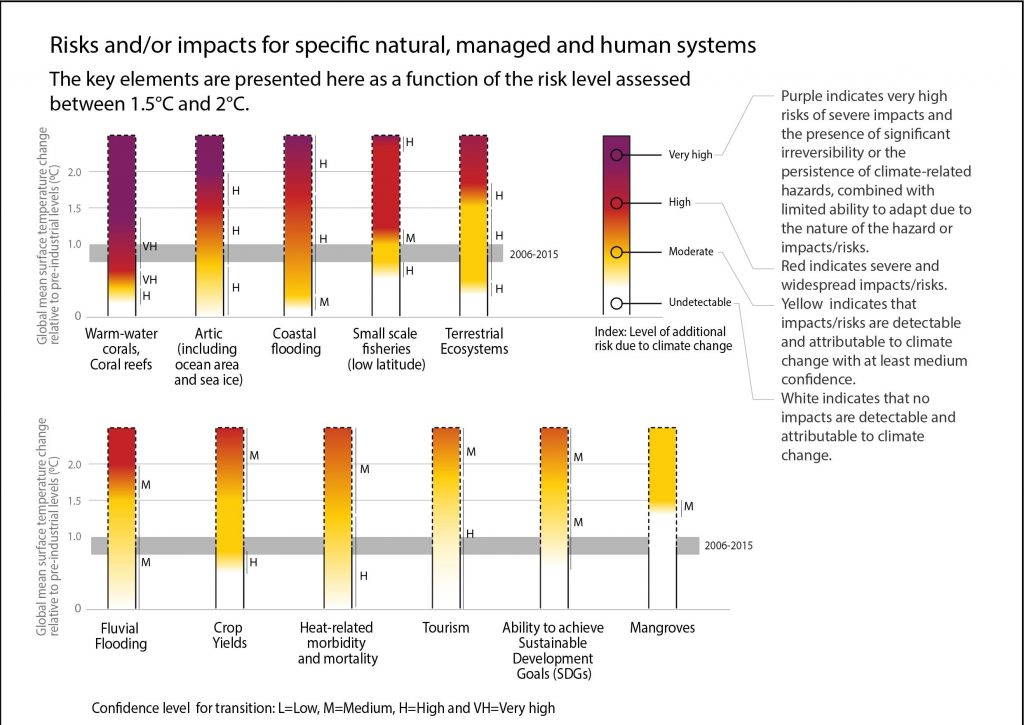The dependence of risks and/or impacts associated with selected elements of human and natural systems on the level of climate change, adapted from Figure 3.21 and from AR5 WGII Chapter 19, Figure 19.4, and highlighting the nature of this dependence between 0°C and 2ºC warming above pre-industrial levels.
The selection of impacts and risks to natural, managed and human systems is illustrative and is not intended to be fully comprehensive. Following the approach used in AR5, literature was used to make expert judgements to assess the levels of global warming at which levels of impact and/or risk are undetectable (white), moderate (yellow), high (red) or very high (purple). The colour scheme thus indicates the additional risks due to climate change. The transition from red to purple, introduced for the first time in AR4, is defined by a very high risk of severe impacts and the presence of significant irreversibility or persistence of climate-related hazards combined with limited ability to adapt due to the nature of the hazard or impact. Comparison of the increase of risk across RFCs indicates the relative sensitivity of RFCs to increases in GMST. As was done previously, this assessment takes autonomous adaptation into account, as well as limits to adaptation independently of development pathway. The levels of risk illustrated reflect the judgements of the authors of Chapter 3 and Gattuso et al. (2015; for three marine elements). The grey bar represents the range of GMST for the most recent decade: 2006–2015.
